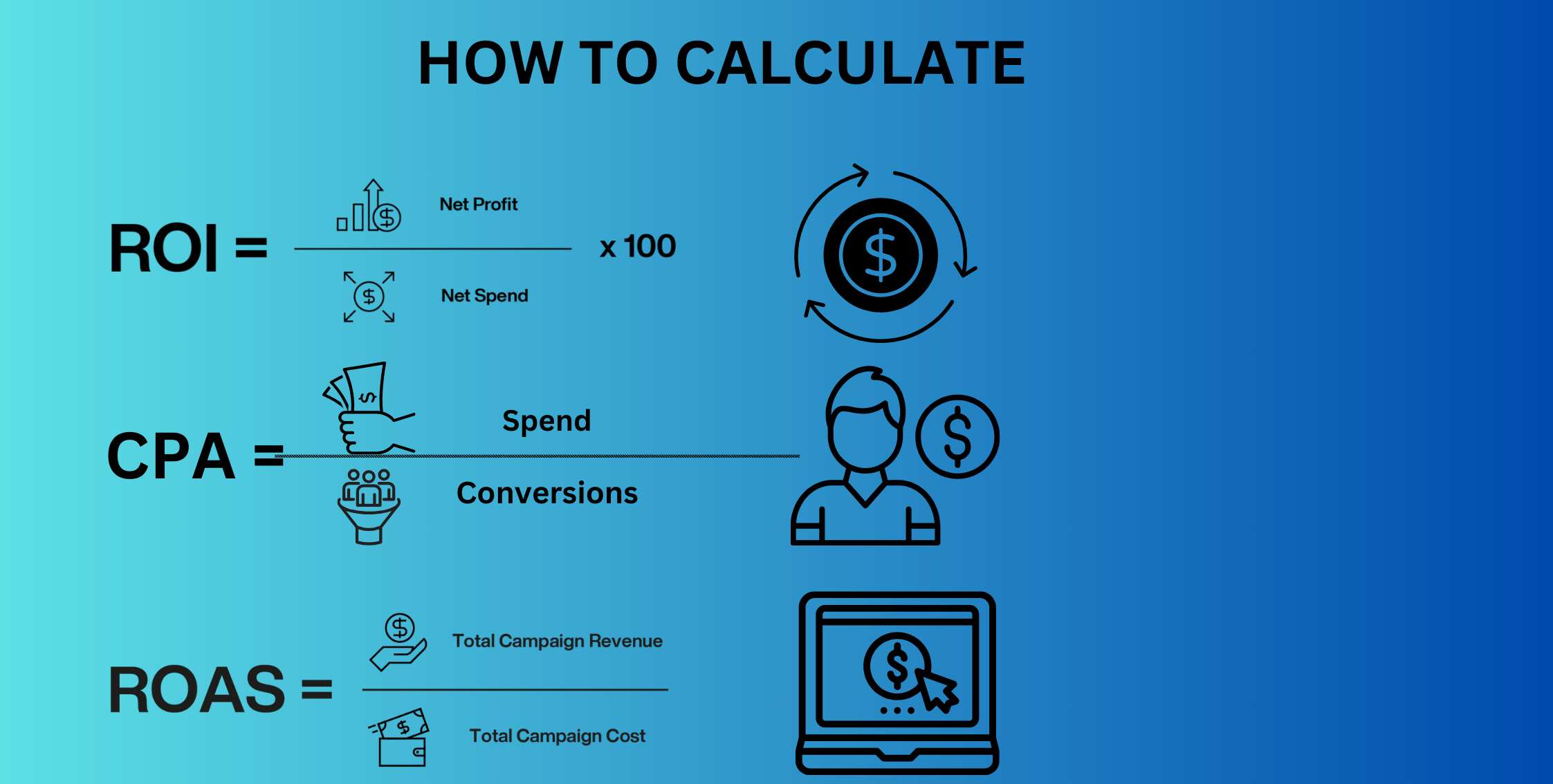Understanding the return on investment (ROI) of your advertising campaigns is crucial for evaluating their effectiveness and optimizing your marketing strategy. ROI helps you determine how well your advertising spend is translating into profits and whether your campaigns are achieving their goals. This guide will walk you through the steps to measure the ROI of your advertising campaigns effectively.
What Is ROI in Advertising?
ROI in advertising measures the financial return on your marketing investments. It is a key metric that helps assess the profitability of your advertising efforts and determine if the expenditure is yielding positive results. In essence, ROI answers the question: For every dollar spent on advertising, how much revenue or profit is generated?
Calculating ROI: The Basics
The basic formula to calculate ROI is:
ROI=Net ProfitCost of Advertising×100\text{ROI} = \frac{\text{Net Profit}}{\text{Cost of Advertising}} \times 100
Where:

- Net Profit is the revenue generated from the campaign minus the cost of the advertising.
- Cost of Advertising includes all expenses related to the campaign.
Example: If you spent $1,000 on a campaign and generated $4,000 in revenue, with $2,000 in profit after deducting other expenses, your ROI would be:
ROI=2,0001,000×100=200%\text{ROI} = \frac{2,000}{1,000} \times 100 = 200\%
Key Metrics to Track for ROI Measurement
To effectively measure the ROI of your advertising campaigns, track the following key metrics:
- Cost Per Acquisition (CPA): Measures the cost of acquiring a single customer through your campaign. It’s calculated as:
CPA=Total Cost of AdvertisingNumber of Conversions\text{CPA} = \frac{\text{Total Cost of Advertising}}{\text{Number of Conversions}}
- Customer Lifetime Value (CLV): Estimates the total revenue you can expect from a customer over their lifetime. It helps assess the long-term value of acquiring a customer.
- Conversion Rate: Indicates the percentage of users who take a desired action (e.g., making a purchase) after interacting with your ad. It’s calculated as:
Conversion Rate=Number of ConversionsTotal Visitors×100\text{Conversion Rate} = \frac{\text{Number of Conversions}}{\text{Total Visitors}} \times 100
- Click-Through Rate (CTR): Measures the effectiveness of your ad in driving traffic to your website. It’s calculated as:
CTR=Number of ClicksNumber of Impressions×100\text{CTR} = \frac{\text{Number of Clicks}}{\text{Number of Impressions}} \times 100
- Return on Ad Spend (ROAS): Shows how much revenue you earn for every dollar spent on advertising. It’s calculated as:
ROAS=Revenue from AdvertisingCost of Advertising\text{ROAS} = \frac{\text{Revenue from Advertising}}{\text{Cost of Advertising}}
Tools for Measuring ROI
Several tools and platforms can help you track and measure ROI for your advertising campaigns:
- Google Analytics: Provides comprehensive insights into website traffic, conversions, and campaign performance.
- Facebook Ads Manager: Offers detailed metrics on ad performance, including CTR, CPA, and ROAS for Facebook and Instagram ads.
- Google Ads: Tracks the effectiveness of your Google search and display ads, including conversion tracking and cost metrics.
- HubSpot: A marketing automation platform that provides ROI analysis for inbound marketing and advertising efforts.
- CRM Systems: Tools like Salesforce can integrate with your advertising platforms to track customer interactions and calculate ROI.
Best Practices for Measuring ROI
- Set Clear Objectives: Define specific goals for your advertising campaigns, such as increasing sales, generating leads, or boosting brand awareness. Clear objectives help in measuring ROI accurately.
- Track All Costs: Include all relevant costs in your ROI calculation, such as ad spend, creative development, and any additional expenses associated with the campaign.
- Measure Performance Regularly: Continuously monitor and analyze campaign performance to understand its impact and make data-driven decisions.
- Compare with Benchmarks: Evaluate your ROI against industry benchmarks and previous campaigns to gauge success and identify areas for improvement.
- Consider Attribution Models: Use attribution models to understand how different touchpoints contribute to conversions. This helps in accurately attributing revenue to your advertising efforts.
Conclusion
Measuring the ROI of your advertising campaigns is essential for understanding their effectiveness and ensuring that your marketing investments are yielding positive returns. By tracking key metrics, using the right tools, and following best practices, you can gain valuable insights into your campaign performance and make informed decisions to optimize your advertising strategy.




